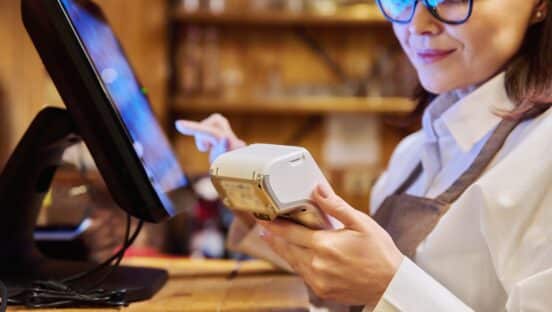Sponsored by LSI Industries.
Drive thrus make up 70 percent of quick-service restaurant sales, a figure that has risen consistently since the early 2000s. That means it’s essential operators create a pleasant and memorable drive-thru experience to keep customers coming back. Here, we discuss four common challenges and what operators can do to maximize drive-thru sales.
1. Use Multiple Signs to Minimize Confusion and Promote LTOs
The “quick” in quick service is the main reason people use the drive thru in the first place—but as traffic increases, so do wait times. Operators are tackling this challenge in several ways, including adding more lanes, having employees take orders carside with tablets during rush hour, and using signage prior to the order location to guide customers.
“In our experience, the multiple sign approach has been most successful,” says David Watford, director of QSR for LSI Industries. Multiple signs help keep confusion to a minimum and can highlight LTOs and high-profit menu items. For example, pre-sell menuboard systems that are properly designed, installed, and operated can make all the difference.
2. Invest in Good Menu Design
When it comes to drive-thru menus, sometimes less is more. “The time it takes to order is a balancing act between the customer and the menu items,” Watford says. “The importance of menu design and how it is presented to the customer cannot be overstated.”
Operators can improve order times by using digital signage that incorporates clean, fresh menu designs that emphasize customer favorites with motion graphics and video rather than static signage. What customers look at on a menuboard, how long they look, and even their emotional responses drive their decision making and determine the dwell time at the menuboard. Using innovative content creation, layout, and menu selection, operators can target specific customers at specific times, incrementally adjusting the menu design to streamline the customer’s decision making.
Watford says that while digital signage is the preferred delivery medium, it is ultimately the content and layout of menu items that speeds up the ordering process. “Dayparted sales data tells us what the customer is buying and when,” Watford says. “The menu design should mirror what that data is telling us.”
3. Improve Order Accuracy
Most quick-serve drive thrus average a 10 percent error rate, which stems from two opportunities for mistakes to be made: during submission of the order, and during fulfillment of the order. This often is the result of employee turnover and inadequate training, along with poorly designed and executed drive-thru systems.
Digital signage and proper menu content with feedback on the order can significantly increase order accuracy. “A slow and clear audible response with a confirmation on the digital menu helps,” Watford says. “Operators must also train staff to speak in a manner that is both friendly and intelligible.” Using optimal microphone and speaker systems that are designed to reduce outdoor ambient noise is also a wise decision.
4. Find An Experienced Vendor Partner Who Knows the QSR Landscape
The missing factor for many quick-service restaurants is the creation of a drive-thru strategy and plan. This may be a stand-alone project or part of an overall digital signage approach for the restaurant.
“Knowing your target customers and executing a satisfying customer experience is the ultimate goal,” Watford says. “A first positive step towards developing a successful drive-thru experience is selecting a partner like LSI that has deep expertise in understanding key needs and challenges of the quick-service sector.”
By Davina van Buren.













